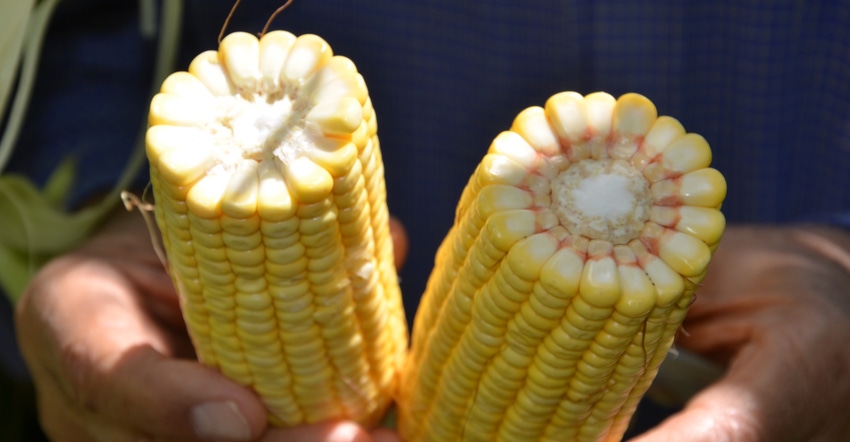
Most corn growers today realize that higher nighttime temperatures during grain fill likely knock several bushels off potential yield. Heat stress during the day can do the same thing.
That’s why the late Jim Newman, a Purdue University ag meteorologist, held to the theory that cooler summers with adequate but not excessive moisture typically resulted in years when USDA corn yield estimates would rise from August through January. Those years favored corn packing in more bushels during grain fill, and USDA formulas would usually underestimate yield. Conversely, if it was a hot, dry summer, he theorized that USDA would drop yield estimates from the initial August estimate.
Newman based his conclusions on observations from 1960 through the early 1980s. It’s unclear if anyone has tested the theory since then.
Higher temps hurt
Syngenta issued the Golden Harvest Agronomy in Action 2021 Research Review earlier this year. David Schlake, Golden Harvest west agronomy manager, and Steve Wilkens, Golden Harvest east agronomy manager, wrote the introduction to this 160-page review.
“Night Temperature Influence on Corn Grain Fill Period and Yield Potential” concluded that night temperatures play an important role in maximizing grain fill potential. Historical data shows a 2.8- to 4.7-bushel-per-acre yield decline for every 1 degree increase in July and August average night temperatures.
However, both night and day temperatures can independently influence yield potential.
You can’t control temperature, but you can help maintain a disease-free upper canopy and assure late-season nutrient availability. If you irrigate, you can control moisture.
What is the magic nighttime temperature? The authors of the Golden Harvest article suggest it shouldn’t exceed 70 degrees F. Yield loss plotted against average minimum nighttime temps indicates loss may begin before the nighttime minimum reaches 70 degrees. That’s based on data collected from 1956 through 2019 at the county level by the National Agricultural Statistics Service and the National Oceanic and Atmospheric Administration. The trend line for yield loss is sharper, from a minimum of 65 to 70 degrees, for data from Kansas and Missouri, but the trend is also toward yield loss, especially from 65 to 70 degrees as a night minimum, based on date from Iowa, Illinois and Indiana.
Earlier research
Perhaps the most telling evidence is from an article published in the Canadian Journal of Plant Science, Volume 63, in 1983. Controlling temperatures, researchers set up four environments: 77 degrees during the day and 59 degrees at night; 77 day and night; 95 day and 59 night; and 95 day and 77 night. Grain ear weight was highest for the first treatment, second highest for 77 and 77, and lowest when daytime temp was 95. However, there was no significant difference for ear weight when the daytime temp was 95 and it was either 59 or 77 at night. Kernel size followed a very similar pattern.
Perhaps the surprise was that the grain fill period from silking to black layer was 57 days for the coolest treatment, 49 days for cool days and warm nights, 42 days for hot days and cool nights, and 39 days for warm days and warm nights.
One theory holds that higher night temps increase respiration, affecting yield. The other, illustrated in the 1983 trial, says increased heat shortens grain fill, reducing yield.
About the Author(s)
You May Also Like




